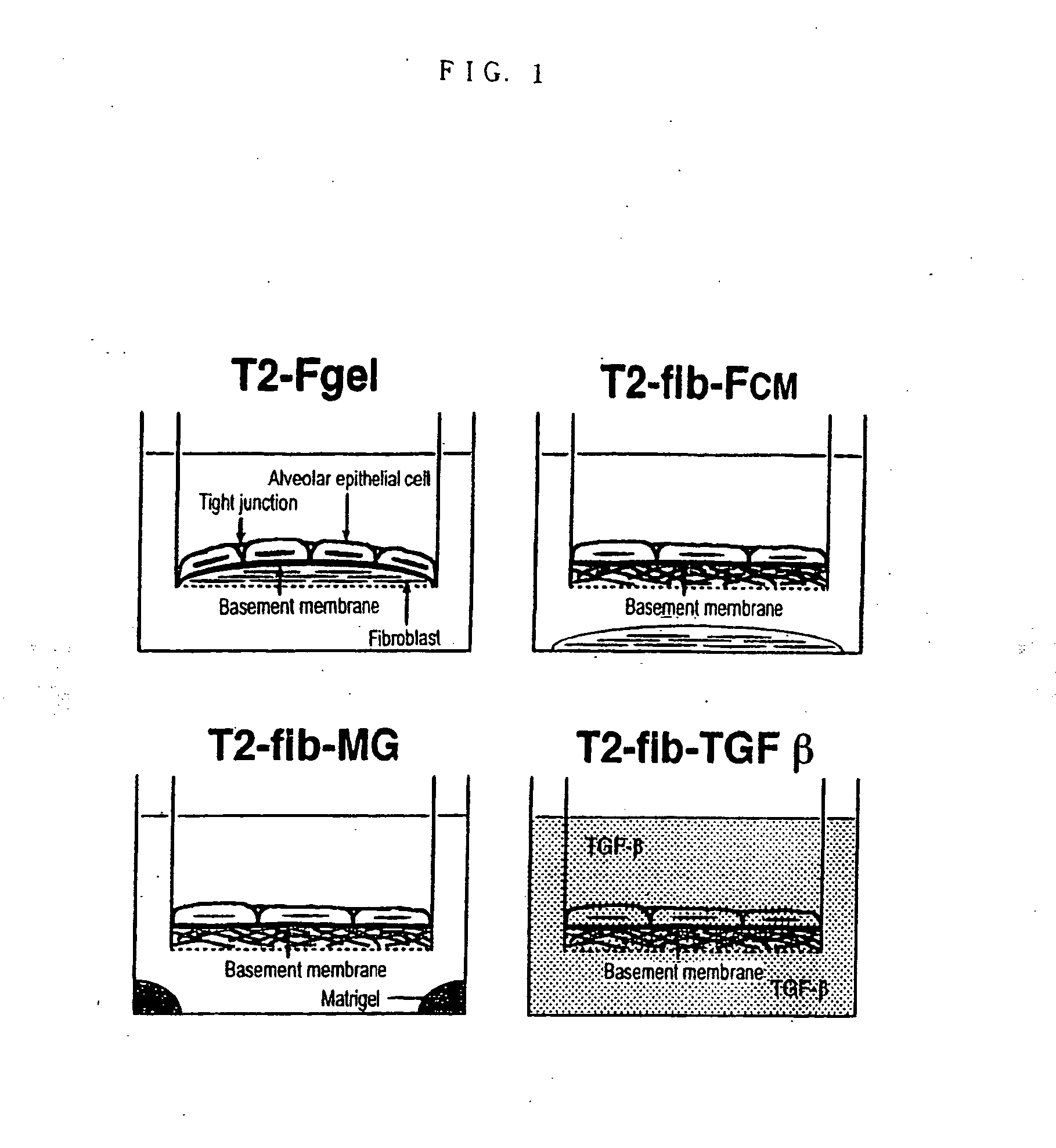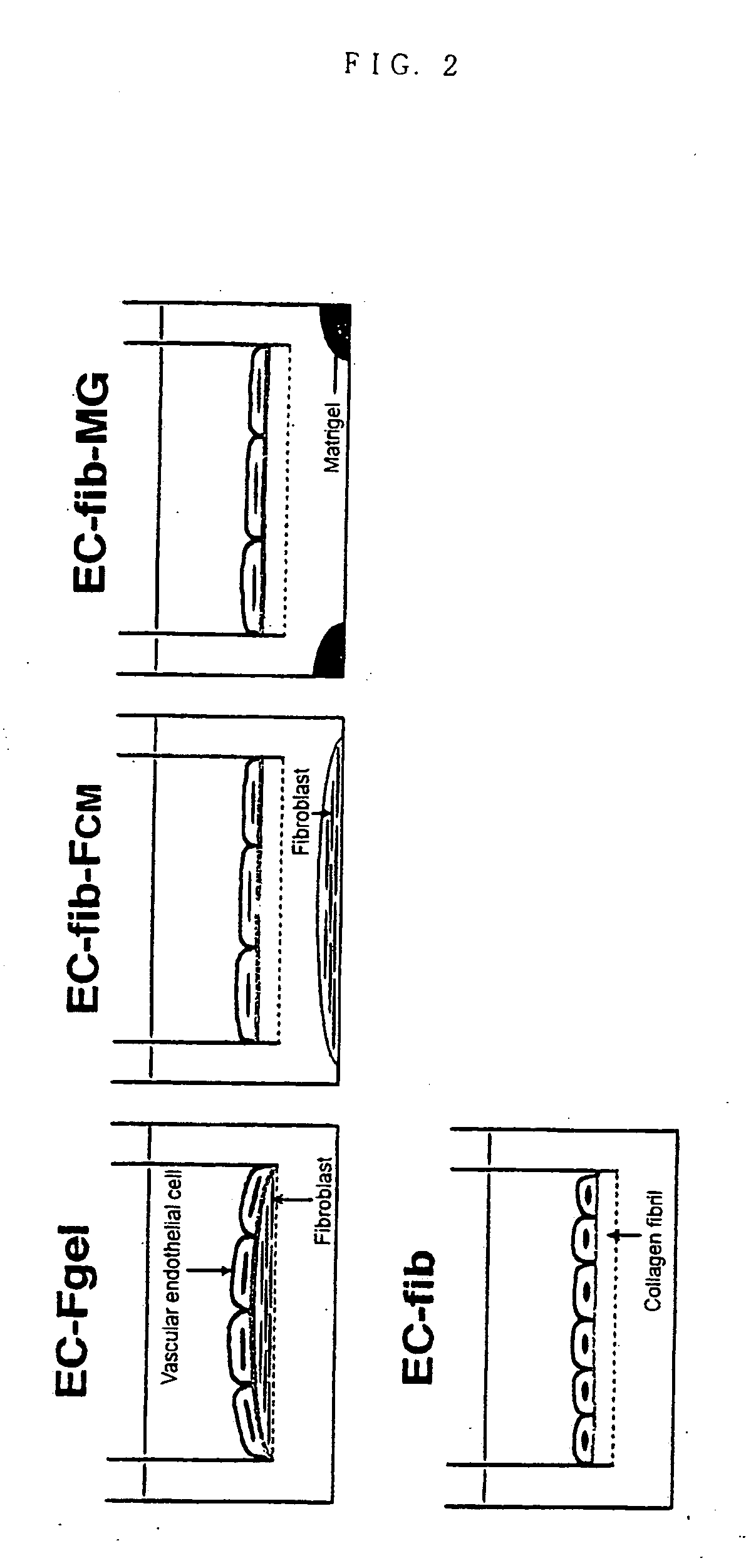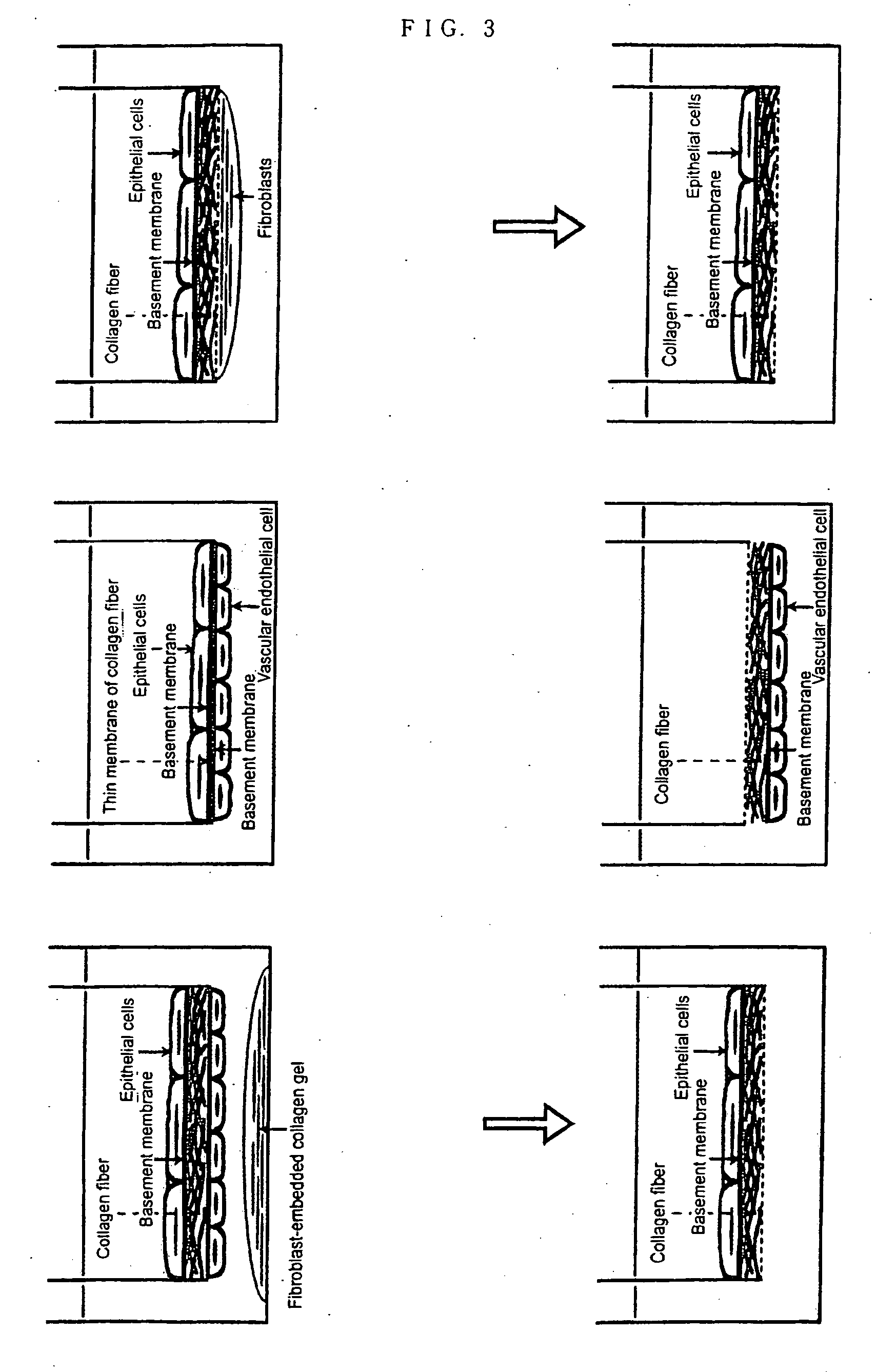Method of preparing basement membrane, method of constructing basement membrane specimen, reconstituted artificial tissue using the basement membrane specimen and process for producing the same
a basement membrane and specimen technology, applied in the field of preparing basement membrane, can solve the problems of complex culture protocol for the formation of a basement membrane its-elf, high cost of matrigel and said growth factor tgf-, and inability to maintain or achieve the original performance of epithelial tissu
- Summary
- Abstract
- Description
- Claims
- Application Information
AI Technical Summary
Benefits of technology
Problems solved by technology
Method used
Image
Examples
example 1
Epithelial Cells, Endothelial Cells and the Like Forming a Basement Membrane
[0074] As for epithelial cells, type II alveolar epithelial cells (obtained from rats transfected with SV40-large T antigen genes; T2 cells) which were provided by Dr. A. Clement, Hôpital Armand Trousseau, Paris (Clement et al., Exp. Cell Res., 196: 198-205, 1991) were cultured in DMEM (Dulbecco's modified Eagle medium) wherein 10 mM of 2-[4-(2-hydroxyethyl)-1-piperazinyl]ethanesulfonic acid (HEPES) (pH 7.2), 10% fetal bovine serum (FBS; Hyclone Laboratories Inc., Logan, Utah), penicillin, and streptomycin are added, in the atmospheric condition of air 95% / CO2 5%, and used. As for endothelial cells, human pulmonary arterial vascular endothelial cells (HPAE cells) purchased from Clonetics were cultured in culture medium of MCDB 131 alone wherein 10 mM of HEPES (pH 7.2), 2% FBS, growth factor, penicillin, and streptomycin are added, or culture medium of equal mixture of MCDB 131 and DMEM, in the atmospheric c...
example 2
Preparation of Fibrous Collagen Gel
[0075] Collagen gel fiber was prepared on the model of dense matrix of collagen gel usually constituted by fibroblasts. Type I neutral collagen solution in DMEM (pH 7.2) (0.3-0.5 mg / ml of type I collagen obtained from 0.42 ml of bovine dermis by acid extraction; Koken Co., Tokyo) were added to 4.3 cm2 of cultured fibroblast layer together with polyethylene terephthalate ester membrane of 6-well culture plate (Becton Dickinson Labware, Franklin Lakes, N.J.), and incubated in CO2 incubator for a few hours-24 hours, then allowed to gelling. This gel was air-dried aid compressed at room temperature for 24-48 hours, and used as high-density collagen fiber (fib). As for the above-mentioned fibroblasts, pulmonary fibroblasts derived from male rats Jcl: Fischer 344 were prepared according to the method previously described (CELL STRUCTURE AND FUNCTION 22: 603-614, 1997).
example 3
Constitution of Tissue Model 1
[0076] The methods for forming epithelial tissues and endothelial tissues having a basement membrane beneath the type II alveolar epithelial cells and vascular endothelial cell layers are shown in FIG. 1 and FIG. 2 respectively. In order to constitute most basic tissue model, the above-mentioned epithelial cells (T2) or endothelial cells (HPAEC) were seeded directly on the collagen gel wherein fibroblasts were embedded, and cultured for 2 weeks (T2-Fgel in FIG. 1, EC-Fgel in FIG. 2). Further, in order to form epithelial tissue and endothelial tissue having a basement membrane using the above-mentioned fib as culture matrix, epithelial cells (T2) or endothelial cells (HPAEC) were directly seeded on fib and cultured for 2 weeks (T2-fib-Fcm, T2-fib-MG and T2-fib-TGFβ in FIG. 1). In FIG. 1, Fcm shows the coculture with collagen gel wherein fibroblasts are embedded (Fgel), MG shows the culture wherein the bottom of culture plate is coated with Matrigel 200 ...
PUM
| Property | Measurement | Unit |
|---|---|---|
| thickness | aaaaa | aaaaa |
| diameter | aaaaa | aaaaa |
| concentration | aaaaa | aaaaa |
Abstract
Description
Claims
Application Information
 Login to View More
Login to View More - R&D
- Intellectual Property
- Life Sciences
- Materials
- Tech Scout
- Unparalleled Data Quality
- Higher Quality Content
- 60% Fewer Hallucinations
Browse by: Latest US Patents, China's latest patents, Technical Efficacy Thesaurus, Application Domain, Technology Topic, Popular Technical Reports.
© 2025 PatSnap. All rights reserved.Legal|Privacy policy|Modern Slavery Act Transparency Statement|Sitemap|About US| Contact US: help@patsnap.com



